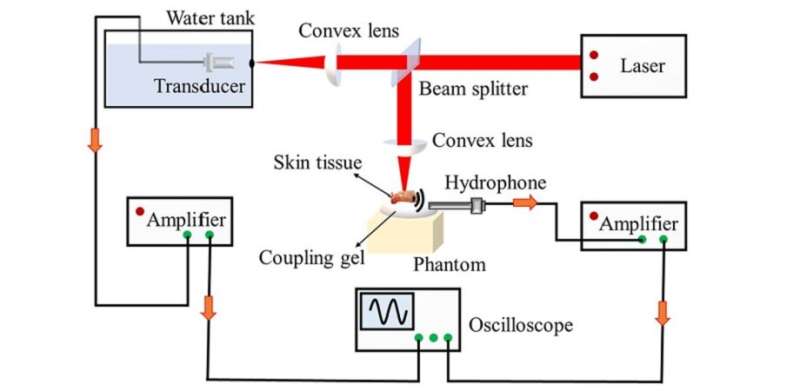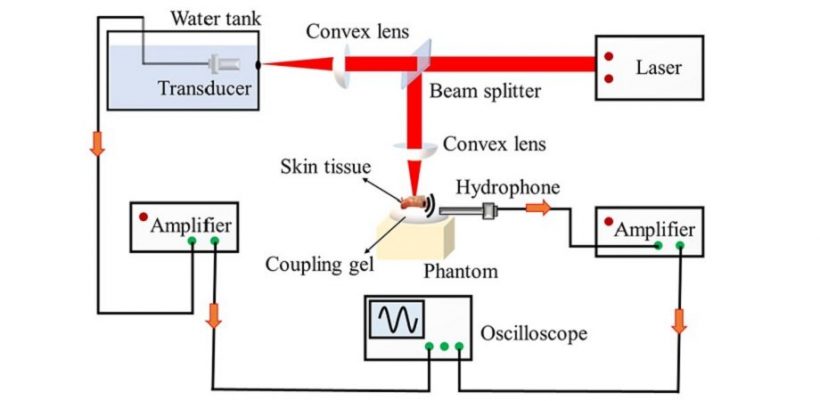
Tumors are not just isolated clumps of abnormal cells, but are associated with more complex system known as the “tumor microenvironment” (TME). Over the past few years, research has revealed that the TME consists of a complex combination of blood vessels, connective tissue, and a matrix of extracellular proteins and molecules. Most importantly, the composition of the TME is different from that of nearby healthy tissues. In particular, the lipid and collagen contents of tumors differ from those of normal tissues, making them important potential biomarkers for diagnosing various types of cancers, such as breast, prostate, or skin cancer.
Currently used methods for the measurement of lipid and collagen content, however, have considerable drawbacks. While invasive biopsy is the gold standard for many cancers, it is uncomfortable and time-consuming. On the other hand, most laser-based techniques and Raman spectroscopy methods cannot penetrate the tissue very deeply, and are useful for gathering only surface information. A technique offering non-invasive diagnosis, reduction in detection time, and a greater detection depth is thus needed.
Against this backdrop, a team of scientists including Professor Qian Cheng from Tongji University, China, have now examined the feasibility of a non-invasive method, namely photoacoustic spectral analysis (PASA), for characterizing tumor-related features of lipid and collagen in the TME. PASA is an innovative approach that combines sound and light to analyze the TME and has shown considerable potential for evaluating endogenous chromophores in biological tissues. This study was published in the Journal of Biomedical Optics and suggests the potential of PASA as a new tool for diagnosing tumors.
Explaining the mechanism underlying this technique, Cheng says, “In PASA, a pulsed laser is used to irradiate biological tissue and its energy is selectively absorbed by endogenous chromophores based on their wavelength. In turn, this generates ultrasonic waves through thermoelastic expansion, which are captured as photoacoustic signals.”
The researchers gathered 39 skin samples from patients with suspected squamous cell carcinoma (SCC) and basal cell carcinoma (BCC) at the Shanghai Skin Disease Hospital of Tongji University. About a third of these samples were of healthy skin tissue, while the other two-thirds were suspected cases of SCC and BCC.
A custom PASA setup was then used to analyze these samples. The samples were irradiated with laser pulses at different wavelengths (1200–1700 nm) spanning the strong absorption regions of both lipid and collagen. The photoacoustic (PA) signals generated by laser irradiation of skin tissues were received with a needle hydrophone.
The analysis revealed that PA signals for the three different types of tissue were different enough to be discerned. Moreover, by comparing these signals with the results obtained from conventional tissue analysis techniques, they found that PASA could provide accurate semi-quantitative results. This, in turn, could help with estimating the amount of collagen and lipid in the sample based on the measured PA signals for characterizing the TME.
To further demonstrate the utility of this approach, the researchers trained a simple machine-learning algorithm on the PASA data to test its accuracy in distinguishing between the three sample types. The algorithm classified the samples with a remarkable overall accuracy of over 91%.
Together, the findings of this study demonstrate the many advantages of PASA. Cheng explains, “PASA provides an objective method for classifying SCC and BCC independent of the experience of a physician or pathologist. In addition, it eliminates the effects of noise and systematic errors, providing system-independent semi-quantitative results. Therefore, our study suggests that PASA can achieve non-invasive diagnosis and identification of different types of tumors.”
In the future, the researchers plan to test the in vivo detection capability of PASA for detecting the boundaries of skin cancers to enable a more precise surgical removal. The full potential of PASA as a powerful diagnostic tool for tumors remains to be revealed.
More information:
Mengjiao Zhang et al, Identification of different types of tumors based on photoacoustic spectral analysis: preclinical feasibility studies on skin tumors, Journal of Biomedical Optics (2023). DOI: 10.1117/1.JBO.28.6.065004
Journal information:
Journal of Biomedical Optics
Source: Read Full Article
